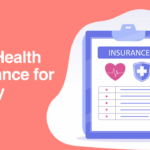What are the best life insurance policies for young adults with low income? It’s a crucial question, especially considering the unexpected financial burdens life can throw your way. Securing affordable life insurance doesn’t have to be a daunting task; understanding the different types of policies available and smart budgeting strategies can make all the difference in protecting your future and your loved ones.
This guide dives deep into finding the right life insurance for young adults on a budget. We’ll explore the most suitable policy types, offer practical tips for managing costs, and highlight the importance of securing coverage even with limited income. We’ll also help you navigate the process of finding and choosing a policy that fits your needs and financial situation, empowering you to make informed decisions about your financial well-being.
Types of Life Insurance for Young Adults with Low Incomes: What Are The Best Life Insurance Policies For Young Adults With Low Income
Securing life insurance can feel daunting, especially when you’re young and on a tight budget. However, protecting your loved ones doesn’t require breaking the bank. Several affordable options cater specifically to young adults with limited financial resources, allowing them to build a safety net without significant strain on their monthly expenses. Understanding these options is key to making an informed decision that aligns with your financial capabilities and future goals.
Term Life Insurance: A Cost-Effective Solution
Term life insurance offers a straightforward and affordable way to secure coverage for a specific period, typically ranging from 10 to 30 years. This type of policy provides a death benefit only if the insured passes away within the specified term. For young adults with low incomes, term life insurance shines due to its lower premiums compared to other types of life insurance.
The premiums are fixed for the duration of the term, providing budget predictability. This makes it a practical choice for those focusing on immediate financial needs while still establishing a safety net for their dependents. The simplicity and affordability make it a popular choice for those starting families or aiming to protect outstanding debts. For instance, a healthy 25-year-old might secure a $250,000 term life insurance policy for a monthly premium as low as $20-$30, depending on health status and other factors.
Term Life Insurance vs. Whole Life Insurance: A Cost Comparison
While term life insurance offers affordability, whole life insurance provides lifelong coverage. However, this permanence comes at a significantly higher cost. Whole life insurance premiums are considerably more expensive than term life insurance premiums, often exceeding them by a substantial margin. This is because whole life insurance builds cash value alongside the death benefit, making it a more complex and expensive product.
For young adults with limited income, the significantly higher premiums of whole life insurance may make it financially impractical. The additional cash value feature, while beneficial in the long term, is often unnecessary for those prioritizing affordable coverage in their early years. Choosing between these two depends on your financial priorities; if affordability is paramount, term life insurance is generally the more suitable option.
Comparison of Life Insurance Policy Types for Young Adults, What are the best life insurance policies for young adults with low income
Understanding the nuances between different life insurance policies is crucial for making an informed choice. The following table provides a comparison of three common types, highlighting premium ranges, coverage amounts, and key features. Remember that these are illustrative examples, and actual premiums and coverage amounts will vary based on individual factors such as age, health, and the insurance company.
| Policy Type | Premium (Monthly Example Range) | Coverage Amount (Example Range) | Key Features |
|---|---|---|---|
| Term Life Insurance | $20 – $50 | $100,000 – $500,000 | Fixed premiums for a set term, affordable coverage, death benefit only |
| Whole Life Insurance | $100 – $300+ | $100,000 – $500,000 | Lifelong coverage, builds cash value, higher premiums |
| Simplified Issue Life Insurance | $30 – $75 | $25,000 – $100,000 | Faster approval process, less medical underwriting, lower coverage amounts |
Affordability and Budget Considerations
Securing life insurance as a young adult with a limited income might seem daunting, but it’s achievable with careful planning and smart choices. Understanding the factors influencing cost and employing effective budgeting strategies are crucial for finding a policy that fits your needs and financial capabilities without compromising your future security.Finding affordable life insurance requires a nuanced approach. The cost isn’t just about the premium; it’s about the overall value you receive for your investment.
This involves considering the type of policy, the coverage amount, and the length of the term. A younger, healthier individual will typically secure lower premiums compared to someone older with pre-existing health conditions. However, even with a lower income, securing some level of coverage is vital for protecting your loved ones in case of unforeseen circumstances.
Factors Influencing Life Insurance Costs for Young Adults
Several factors significantly influence the cost of life insurance for young adults. Age plays a crucial role; younger individuals generally receive lower premiums due to statistically lower risk. Health status is another key determinant; pre-existing conditions or unhealthy lifestyle choices (like smoking) can lead to higher premiums or even policy denial. The amount of coverage desired directly impacts the premium; higher coverage means higher costs.
Finally, the type of policy chosen—term life insurance is typically more affordable than whole life insurance—also affects the overall expense. For example, a 25-year-old healthy non-smoker will likely receive a much lower premium than a 35-year-old with a history of heart problems.
Finding affordable life insurance as a young adult with limited income can feel daunting, but options exist! Term life insurance is usually the most budget-friendly, offering a set period of coverage. Before you dive in, it’s helpful to understand the basics, like checking out resources such as this introductory guide: Hello world! which explains fundamental concepts.
Then, compare quotes from multiple providers to find the best fit for your financial situation and needs, ensuring you get the coverage you deserve without breaking the bank.
Strategies for Finding Affordable Life Insurance
Finding affordable life insurance involves exploring various options and making informed decisions. One effective strategy is to start with a smaller coverage amount that aligns with your current budget. As your income increases, you can gradually increase your coverage to meet your evolving needs. Comparing quotes from multiple insurers is essential to find the most competitive rates.
Online comparison tools can simplify this process. Consider term life insurance, which offers affordable coverage for a specific period, as a cost-effective solution for young adults. For example, a 10-year term life policy may be significantly cheaper than a whole life policy offering the same coverage amount.
Impact of Health Status and Lifestyle Choices
Health status and lifestyle choices significantly impact life insurance premiums. Insurers assess applicants’ health risks to determine premiums. Individuals with pre-existing conditions or unhealthy habits (like smoking or excessive alcohol consumption) are considered higher risks, leading to higher premiums. Maintaining a healthy lifestyle through regular exercise, balanced diet, and avoiding harmful substances can help secure more favorable rates.
For instance, a young adult who maintains a healthy weight and exercises regularly might qualify for a lower premium compared to someone who is obese and smokes.
Tips for Managing Budget and Securing Life Insurance
Effectively managing your budget while securing life insurance requires careful planning and prioritization.
- Create a detailed budget: Track your income and expenses to identify areas where you can save.
- Prioritize essential expenses: Ensure you allocate sufficient funds for necessities before considering life insurance.
- Explore affordable coverage options: Start with a smaller coverage amount and gradually increase it as your income grows.
- Compare quotes from multiple insurers: Don’t settle for the first quote you receive. Shop around for the best rates.
- Consider term life insurance: This offers affordable coverage for a specific period, making it a suitable option for young adults.
- Maintain a healthy lifestyle: A healthy lifestyle can help you qualify for lower premiums.
Importance of Life Insurance for Young Adults

Securing your future might seem distant when you’re young, but life insurance offers crucial financial protection even at a young age. Unexpected events can drastically impact your financial stability, making life insurance a smart investment regardless of your income level. For young adults, this protection extends beyond simply safeguarding assets; it’s about securing the future for loved ones and mitigating potential financial ruin.Financial Implications of Unexpected Death and Critical Illness for Young AdultsThe death of a young adult can leave behind significant financial burdens for dependents and creditors.
Outstanding student loans, mortgages, or credit card debt can become crushing for surviving family members. Similarly, a critical illness or disability can quickly deplete savings and leave a young adult unable to work, incurring substantial medical expenses. Life insurance acts as a safety net, providing a financial cushion to cover these unexpected costs and maintain a degree of financial stability during difficult times.
Financial Security Provided by Life Insurance
Life insurance offers a crucial safety net, allowing young adults to protect their loved ones and their financial future. Consider these scenarios:
| Scenario | Financial Impact Without Insurance | Financial Impact With Insurance |
|---|---|---|
| Sudden death leaving behind a spouse and young child | Outstanding mortgage, childcare costs, and loss of primary income source could lead to homelessness and financial ruin for the surviving spouse and child. Potential reliance on government assistance and significant lifestyle changes. | Life insurance payout could cover the outstanding mortgage, provide for childcare expenses, and replace the lost income, allowing the family to maintain their standard of living. |
| Critical illness requiring extensive medical treatment | Massive medical bills could lead to bankruptcy and financial ruin, forcing the individual to sell assets and potentially lose their home. Loss of income due to inability to work could exacerbate the situation. | Life insurance with a critical illness rider could provide a lump sum payment to cover medical expenses, allowing the individual to focus on recovery without the added stress of financial burdens. Disability benefits from the policy could also replace lost income. |
| Disability preventing work for an extended period | Loss of income would quickly deplete savings, leading to potential foreclosure, debt accumulation, and a significant decline in quality of life. Inability to meet basic living expenses could become a serious problem. | Disability coverage from a life insurance policy could provide a monthly income replacement, allowing the individual to maintain their living expenses and avoid financial hardship during their recovery. |
Finding and Choosing a Suitable Policy

Securing the right life insurance policy can feel overwhelming, especially for young adults on a budget. However, with a systematic approach and careful consideration, finding affordable and adequate coverage is achievable. This section provides a step-by-step guide to navigate the process effectively.Choosing the right life insurance policy involves careful research and comparison. Understanding your needs and exploring available options is crucial before committing to a policy.
Policy Research and Comparison
Begin your search by identifying your needs and budget constraints. Determine the desired coverage amount based on your financial obligations and future goals. Next, utilize online comparison tools to explore different policies offered by various insurance providers. These tools often allow you to filter options based on your age, health status, and budget. Pay close attention to the premiums, coverage amounts, and policy terms offered.
Remember that the cheapest option isn’t always the best; consider the long-term value and suitability of the coverage. For example, comparing a term life insurance policy with a whole life policy will reveal significant differences in premium costs and benefits. Term life insurance, typically cheaper for young adults, provides coverage for a specific period, while whole life insurance offers lifelong coverage but comes with higher premiums.
Questions to Ask Insurance Providers
Before purchasing a policy, it’s essential to clarify any uncertainties with the insurance provider. Obtain detailed information about the policy’s coverage, exclusions, and limitations. Specifically, inquire about the claim process, the policy’s renewability or convertibility options, and any potential future premium increases. Ask about the provider’s financial stability and customer service ratings. For example, you could ask, “What is the process for filing a claim, and how long does it typically take to receive payment?” or “Can you explain the policy’s renewability options and whether the premium will increase after the initial term?” This proactive approach ensures you understand the policy’s intricacies and make an informed decision.
Understanding Policy Terms and Conditions
Thoroughly reviewing the policy’s terms and conditions is paramount before signing any contract. Don’t hesitate to seek clarification from the insurance provider on any unclear clauses or conditions. Pay close attention to the definition of covered events, exclusions, waiting periods, and any limitations on benefits. Understanding the policy’s fine print protects you from unexpected situations and ensures you receive the coverage you expect.
For instance, some policies may exclude coverage for specific pre-existing conditions or high-risk activities. Carefully reading and understanding these exclusions is critical to avoid disappointment later.
Utilizing Online Comparison Tools
Several online comparison tools simplify the process of finding suitable life insurance options. These tools allow you to input your personal details and preferences, then generate a list of policies that match your criteria. Reputable comparison websites often provide unbiased information and allow you to compare premiums, coverage amounts, and policy features side-by-side. Remember to cross-check the information provided on these websites with the insurance providers directly.
Using online tools can significantly reduce the time spent researching and comparing policies, making the process more efficient. Websites specializing in insurance comparisons usually provide detailed policy information, customer reviews, and financial ratings of insurance companies, offering a comprehensive overview to help you make a well-informed decision.
Additional Resources and Support

Navigating the world of life insurance can feel overwhelming, especially for young adults with limited incomes. Fortunately, several resources can provide assistance and guidance, making the process more manageable and affordable. Understanding these resources can significantly impact your ability to secure crucial financial protection for yourself and your loved ones.Securing affordable life insurance doesn’t have to be a solitary journey.
Numerous government programs, non-profit organizations, and online tools can help you find the right policy and manage the costs effectively. By exploring these resources, you can gain a clearer understanding of your options and make informed decisions about your financial future.
Government Assistance Programs and Subsidies
While there isn’t a specific government program dedicated solely to subsidizing life insurance premiums, some programs indirectly assist individuals in improving their financial stability, which in turn makes purchasing life insurance more feasible. For example, programs aimed at reducing poverty or increasing access to healthcare can indirectly help young adults improve their financial situation, making it easier to afford life insurance.
Furthermore, depending on your specific circumstances and location, you may be eligible for state or local assistance programs that offer financial aid or support services that can alleviate financial strain, indirectly improving your ability to purchase insurance. It’s crucial to research programs available in your state and local area to determine eligibility.
Non-Profit Organizations Offering Financial Literacy Resources
Many non-profit organizations dedicate themselves to improving financial literacy among young adults. These organizations often provide free or low-cost workshops, seminars, and online resources covering various financial topics, including insurance planning. Examples include the National Endowment for Financial Education (NEFE) and the Jump$tart Coalition for Personal Financial Literacy. These organizations often partner with community centers and schools to make their resources accessible to a wider audience.
They provide valuable tools and education to help individuals make informed decisions about their financial future, including understanding the importance and options available in life insurance.
Reputable Online Resources for Comparing and Researching Life Insurance
The internet offers a wealth of information on life insurance, but it’s crucial to use reputable sources. Before making any decisions, carefully evaluate the information you find online.
- Independent Rating Agencies: Websites like AM Best, Moody’s, and Standard & Poor’s provide ratings for insurance companies, offering an objective assessment of their financial stability and reliability.
- Consumer Advocacy Groups: Organizations like the National Association of Insurance Commissioners (NAIC) provide consumer resources and information on insurance regulations and best practices.
- Comparison Websites: Several websites allow you to compare quotes from different insurance companies. However, remember that these sites may be affiliated with specific insurers, so compare several sites and read reviews before making a decision. Examples include NerdWallet and Policygenius.
It’s vital to compare quotes from multiple insurers and understand the terms and conditions of each policy before committing to a purchase.
Benefits of Seeking Advice from a Qualified Financial Advisor
A qualified financial advisor can provide personalized guidance tailored to your specific financial situation and goals. They can help you assess your needs, understand the different types of life insurance policies, and choose a plan that aligns with your budget and long-term objectives. They can also help navigate the complexities of insurance policies and provide ongoing support as your circumstances change.
While their services come with a fee, the expertise and personalized guidance they offer can be invaluable in ensuring you make the best decisions for your financial future. A financial advisor can also help you develop a comprehensive financial plan that encompasses various aspects of your financial life, not just life insurance.
